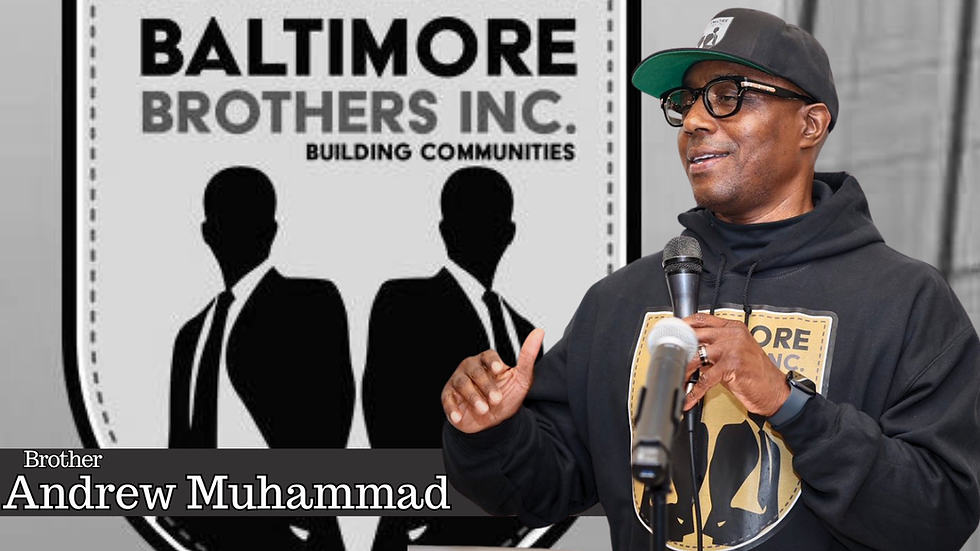Preparing for Natural Disasters and Emergencies: Lessons from Recent and Historical Events
- Brother Levon X

- Jan 9
- 3 min read

The wildfires tearing through Los Angeles right now are a sobering reminder of how unpredictable and devastating natural disasters can be. Entire neighborhoods have been reduced to ashes, businesses destroyed, and families forced to leave behind everything they know. These moments remind us of the fragility of life and the importance of being prepared. As we hold those affected in our thoughts, it’s crucial to learn from the past. Disasters like Hurricane Katrina, which uprooted entire communities and caused immeasurable loss, teach us that preparedness is not a luxury—it’s a necessity.
Too often, we assume disasters are something that happen to other people in faraway places. This kind of thinking leaves us unprepared and vulnerable. Taking life seriously means recognizing that we, too, could face a natural disaster and that preparation is key. Preparedness isn’t about paranoia; it’s about protecting what matters most—our lives, our loved ones, and our communities.
The COVID-19 pandemic gave us another powerful lesson about the need for preparation. When the world shut down, many of us faced empty store shelves, disrupted supply chains, and restricted access to essential goods. This experience underscored the importance of being self-reliant and having a plan for emergencies that go beyond natural disasters. Stocking up on essentials like food, water, and hygiene items can mean the difference between managing through a crisis and struggling to get by. The pandemic showed us how quickly the unexpected can alter our daily lives, and how being prepared can alleviate stress and uncertainty.
A critical first step in being prepared is reviewing your insurance policies. Disasters don’t come with warnings, and you don’t want to find out after the fact that you’re not covered. Make sure your home, belongings, and health are protected against risks like floods, fires, and earthquakes. Insurance might seem like just another bill, but it’s a safeguard that can ease the path to recovery when you need it most. In addition to insurance, an emergency fund is vital. When systems go down and electronic payments are impossible, cash can mean the difference between managing a crisis and struggling through it.
Another essential component is having an evacuation plan. Emergencies are chaotic, and knowing where to go and how to get there can save precious time. Whether it’s a relative’s home, a community shelter, or a nearby hotel, identify multiple safe locations. Make sure every member of your family knows the plan and practice it together so it’s second nature.

At the heart of any disaster plan is a survival kit. This kit should be easy to assemble and tailored to meet your family’s needs. Consider this checklist:
Non-perishable food and bottled water (enough for three days per person)
Flashlights and extra batteries
A hand-crank or battery-powered radio
A portable power bank or small generator
First aid supplies and any necessary medications
Warm blankets or sleeping bags
Durable clothing and sturdy shoes
A multi-tool or utility knife
Walkie-talkies for communication
Waterproof matches or a lighter
Hygiene items like toothbrushes, soap, and hand sanitizer
Important documents stored safely in a waterproof container
Emergency cash in small denominations
Maps of your local area
A whistle to signal for help
Spare glasses or contact lenses, if needed
Being physically fit is just as important as having the right tools. Emergencies often demand physical effort—climbing stairs, carrying supplies, or walking long distances. If you’re not in shape, these tasks can quickly become overwhelming. Prioritizing your health through regular exercise isn’t just good for everyday life; it’s a critical component of survival. Staying active means you’re better equipped to protect yourself and assist your family in a crisis.
Communities also have a role to play. Faith-based organizations and local groups are often lifelines during disasters. They can organize workshops, provide resources, and create networks to support those most in need, such as the elderly and children. A united community is a resilient community, and working together strengthens everyone’s chances of weathering a storm—literal or figurative.
Preparedness isn’t just about gathering supplies or making plans; it’s a mindset. It’s about valuing readiness over complacency and choosing to act instead of leaving things to chance. In today’s world, we have access to an incredible amount of information and resources. Let’s use them to take steps now—reviewing our insurance, building survival kits, staying informed, and staying healthy. These actions might seem small, but they can make a world of difference when disaster strikes.
Let’s not wait for the next crisis to catch us off guard. Preparation is how we protect what matters most. It’s how we face uncertainty with strength and resilience. So today, let’s commit to being ready—for ourselves, for our families, and for our communities.





Comments